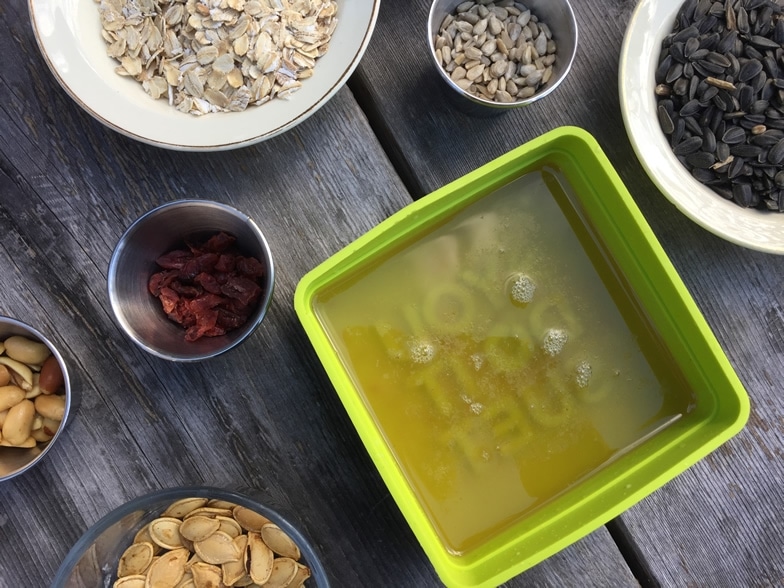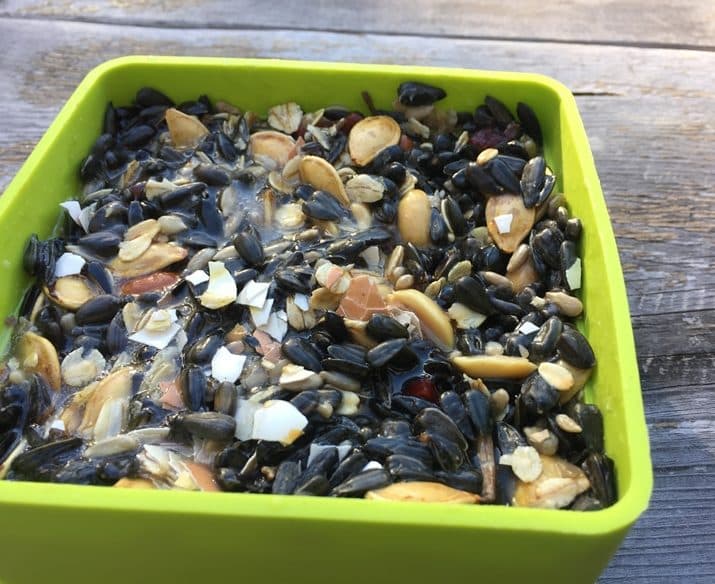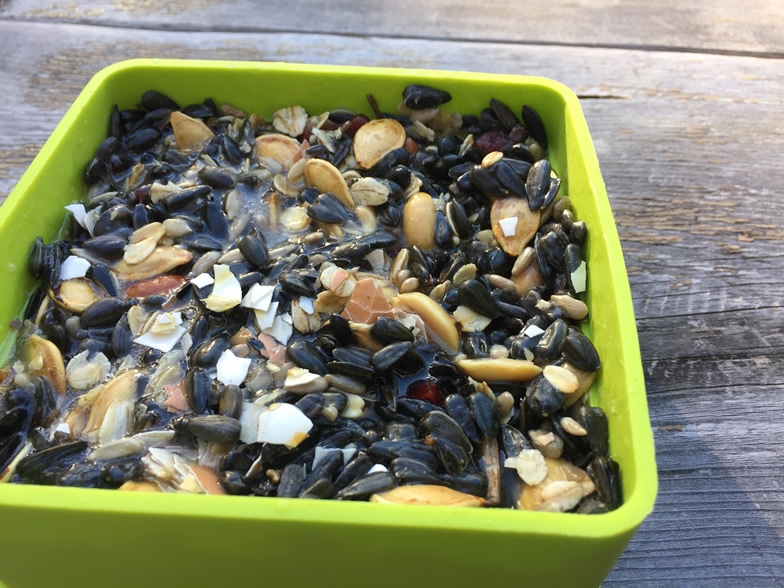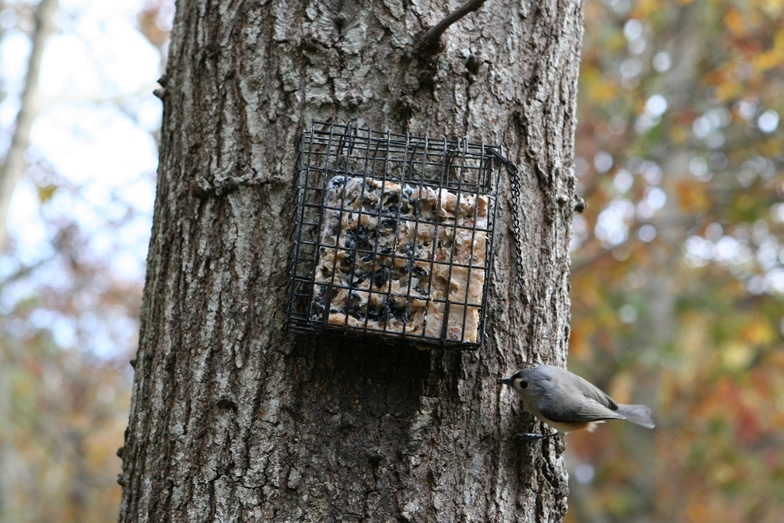When the weather turns cold and our cooking moves from the backyard grill to the kitchen stove, the diet of our backyard birds is also changing.
As summertime food sources start to dwindle, birds require other sources of energy to help them through the cold winter or their migration to warmer temperatures. A step above the standard backyard bird food staple of black oil seed, suet cakes can provide an excellent source of supplemental nutrients.
Like humans, birds derive energy from animal fats, and bird suet is created from rendered fat for this very reason. Fat provides twice the caloric energy per unit weight than carbohydrates, making it an ideal resource for birds and their accelerated metabolisms. While it was originally popular only in the winter months because fat would melt in higher temperatures, suet recipes now include mixtures that resist warmer temperatures. This allows suet to be deployed in the spring, when it can aid nesting birds and their fledglings.
Depending on the recipe, suet cakes can attract the following birds to your backyard feast: Downy, Hairy, Red-Bellied, and Pileated woodpeckers; northern flickers; nuthatches, chickadees, starlings, blue jays, bluebirds, American robin, brown thrasher and dozens more.
Although available at most pet, feed, and grocery stores, suet cakes can also be made at home using excess cooking fat from beef or pork dishes. Instead of draining off the fat into a receptacle that is discarded, this fat can be collected and mixed with other bird-friendly ingredients to make nutrient-rich suet cakes.

Two of the best types of fat for creating suet cakes are beef and pork, although peanut butter and coconut oil can be used as suitable bonding agents. Whether it’s from morning bacon or ground beef for tacos, pork and beef (stay away from chicken or fish) yield ideal fat for bird suet cakes.
Make sure to securely fashion your suet cage or feeder to its support, whether that be a tree or a pole. Squirrels, raccoons — and in some regions deer and even bears — will also enjoy snacking on suet cakes. If the animal is hungry – or persistent – enough, it could take off with your suet cakes and/or your suet feeder completely! A rule of thumb when feeding birds and wildlife in general: keep your yard clean and take food inside when confronted with unwanted visitors.

While most suet recipes are best for warmer temperatures, suet cakes created in the summer months can be wrapped and stored in the freezer for use in the fall and winter. This is not only better to prevent melting, but offers them when your avian friends need the nutrients the most. ![]()

